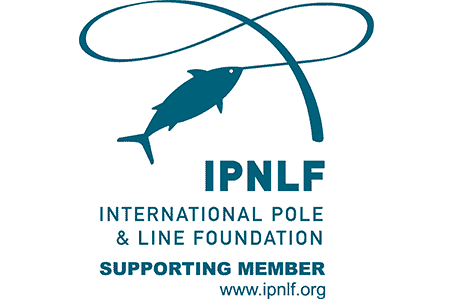Finding alternatives to live Bait
Maumere and Bitung, Indonesia
Finding alternatives for live bait in pole and line tuna fisheries
Pole and line fishing for skipjack tuna is heavily reliant on the availability and quality of live bait. This project by the International Pole and Line Foundation (IPNLF) is asking the question “Can we use technology to reduce pole-and-line dependence on live bait?”. IPNLF’s team is experimenting in Indonesia with different types of technology to partially replace the live bait. Fish Tales Foundation is involved in this project by proudly taking place in the steering committee.
Pole and line fishing is known as the most sustainable fishing technique to capture tuna. With this method, fishermen hold a bamboo rod with one line and hook. When the tuna bite, they haul them in one by one, resulting in minimal to zero bycatch.
The fishermen lure the tuna to the boat by throwing live bait in the water. This bait are smaller fish species like sardines, anchovies, and mackerels. In the case of the pole and line skipjack tuna fishery in Bitung, Indonesia, bait is bought from local bait fishermen living in small shoreline villages in the area. Because the live bait is an essential part of the capture process, the success of each tuna fishing trip is heavily reliant on the availability and quality of bait.
Reducing its dependence on live bait is an important step towards a more sustainable and efficient future for these types of fisheries. This would mean that they need to sail less of a distance, reducing the carbon footprint of the fishery and thereby also fuel costs. Using less bait fish also means that the bait fish populations and shoreline ecosystem remain better preserved.
This innovative and potentially groundbreaking project aims to find an alternative method to partly replace the live bait. The initial setup involves the use of underwater programmable LED lights and sounds to mimic a natural tuna feeding response, with the hypothesis that this will induce a feeding response, leading the tuna to bite the fishermen’s hooks.
Currently in its first pilot phase based in Indonesia, the project involves testing the experimental setup and gathering new information. Additional trials are planned for the coming year. The ultimate goal is to share the project’s findings with fisheries and stakeholders globally, ensuring accessibility and replicability of the developed technologies.
The project is supported by the UK government’s Department for Environment, Food and Rural Affairs (DEFRA) through their Darwin Initiative Fund. Fish Tales, supporting the project through the Fish Tales Foundation, takes seat in the project steering committee together with Woolworths in South Africa, Marks & Spencer, and Sainsbury’s in the UK.
“To be at the forefront of such an innovative project for small-scale tuna fisheries is truly exciting.
We have the potential to develop a new standard in pole-and-line tuna fishing that can offer a replicable model to other low-impact one-by-one fisheries globally. This form of nature-positive food production may be exactly what we should be imagining for wild-caught tuna. When one-by-one fisheries create little harm to the oceans in which they fish, establishing these fisheries for market success could alter the existing tuna industry’s paradigm towards a more positive future — a future in which no one is left behind.”
– Craig Turley, IPNLF Fisheries Consultant.
This project by the International Pole and Line Foundation (IPNLF) is supported by the UK government’s Department for Environment, Food and Rural Affairs (DEFRA) through their Darwin Initiative Fund.
Partners





